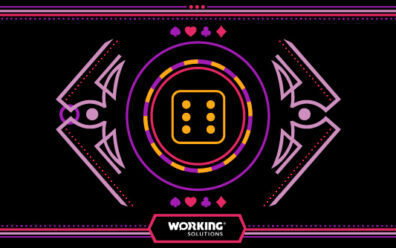Contact Center Technology Customer Experience Healthcare and Insurance Industry Insights Travel and Hospitality3 minute read
Under-the-hood Tech Insight Enables Client Business Solutions
As a technologist, I tell clients you need to understand the “gutworks” of a system to serve customers in the ways they expect. Knowing the inner workings precedes developing any practical, productive applications.

That’s the case whatever industry you work in, be it travel, healthcare or contact center. To get the right answers you must get under the hood, examining things— big and small—to formulate sound solutions.
It means taking a user’s perspective, being an empathetic industrial engineer. For instance, identifying with a reservations agent to simplify a system interface to better engage travelers. Or, taking on a consumer persona to deliver a more tailored customer experience.
To do that well, a technologist has to understand cause-and-effect to affect any meaningful change. Examining things from the inside out offers insight, from which opportunities arise to innovate and transform business.
“A technologist has to understand cause-and-effect to affect any meaningful change.” Share on X
Simplifying the Sabre Reservations System
Here’s a case in point: Years ago, I worked on a tech team optimizing flight reservations at Sabre. Back then, it was American Airlines’ technology division. The original Sabre system, known for its green screens and cryptic commands, hampered travel agents with its complexity.
I became certified in it to learn the difficulties firsthand, with the goal to streamline operations so agents didn’t have to rely on a manual. The team analyzed and grouped data in a linear way for more logical access. Agents then could easily compare information side-by-side and make flight recommendations faster.
The work simplified the reservations system industrywide. Twenty-plus years later, Sabre remains in use, with agents skilled in this legacy technology still much in demand.
Groundbreaking e-commerce at Travelocity.com

Optimizing technology includes analyzing the flow and the different technologies used in any system.
Building on the Sabre experience, I joined Travelocity.com as a start-up. One of the big things there was upselling. To do that, we had to gather consumer data and make sense of it all to better customize services.
For instance, by tracking behavior and buying patterns, the information technology team knew Mrs. Jones would like to vacation in the Caribbean during May. With this information, we could create a sales profile that offered her similar options in nearby locations.
Knowing this, we could reach out to Mrs. Jones in January and February about upcoming vacation deals. These expanded services offered her a lot more options of where to spend her time and money.
Remember, back in 1996 when Travelocity.com started, monetizing services on the web was all new. For Travelocity.com, the main thing we wanted was stickiness with the customer. Deciphering data, and then personalizing offerings, enabled us to not only attract, but keep, customers in this new internet world.
Introducing Supply-chain Efficiencies at Vizient

Team communicating different ways of solving technology problem.
The under-the-hood thinking applied at Sabre and Travelocity.com also played out in supply-chain disruption at Vizient, Inc., a healthcare entity of nonprofit hospitals. Again, business transformation underpinned the work.
Through the application development team, we introduced supply-chain efficiencies, seeking breakthrough opportunities to reinvent healthcare delivery.
With the goal of selecting and streamlining the flow of supplies between the hospitals and vendors, we faced this dilemma: Providers had then, and still do, so many choices of what to purchase.
For instance, in buying disposable gloves, there’s a number of criteria to meet—pliability, thickness and materials used. And there might be a number of manufacturers to evaluate before deciding.
The team weighed into the problem, using algorithms to compare different products, all the similarities and variables, and then recommended which gloves to procure. In the end, it became a technology-driven choice in choosing the best product for many hospitals.
Technology enables you to delve into data, find the root causes and make correlations with buying patterns. Then, you can present the most enticing options to clients to best serve their customers.
As always, the end-game is business efficiency and consumer empowerment.

Improve your customer experience with our insight.
Contact us
This Might Interest You...
This website uses cookies to personalize and improve your experience. Continue browsing our site if you agree to our Cookie Policy or feel free to Manage Cookies yourself.


